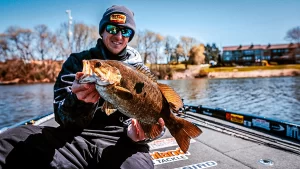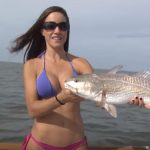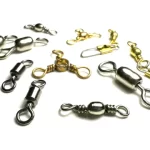As water temperatures plummet in the winter, bass become less willing to chase down fast-moving lures. This seasonal lethargy makes deadsticking — letting a bait sit motionless to entice bites — a highly effective strategy for targeting inactive bass. Whether fishing deep structures or shallow cover, this slow and deliberate approach can turn tough days into rewarding ones.

Understanding Winter Bass Behavior
When temperatures drop, bass adjust their feeding habits. They often position themselves in deeper water around points, waiting for an opportunity to ambush prey. In these colder months, bass conserve energy, making slow, stationary presentations particularly effective. Deadsticking a bait in the strike zone allows bass to investigate the lure at their own pace, increasing the likelihood of a bite.
Deadsticking Techniques and Presentations
Deadsticking relies on keeping a lure in front of a bass for extended periods. Here are three proven presentations for this method:
- Carolina Rig
A Carolina rig is ideal for deadsticking because it keeps your bait near the bottom, right where winter bass are holding. Slowly drag the rig along the bottom, creating silt disturbances that mimic a crawling crawfish.- Setup Tips: Use a heavier weight, such as a 1/2- or 3/4-ounce tungsten barrel or brass weight, to keep the bait in place. Pair it with a soft plastic like a Zoom Fluke Stick, Yamamoto Senko, or Lake Fork Ring Fry. These baits have subtle action that remains enticing even when stationary.
- Leader Length: Adjust the fluorocarbon leader length based on water clarity. Start with an 18-inch leader and extend to 30 inches if the water is especially clear.
- Dragging a Jig
Jigs are another effective option for deadsticking. Slowly dragging a jig along the bottom and letting it rest in the strike zone can entice even the most sluggish bass.- Weight Selection: Use a lighter jig, typically 3/8- or 1/2-ounce, to maintain a small profile.
- Customization: Experiment with plastic trailers to alter the jig’s profile. A larger chunk or creature bait creates a bigger presentation, while smaller chunks or double-tail grubs are better for finicky bass.
- Soaking a Senko
One of the most popular deadsticking techniques, soaking a Senko involves casting out a Texas-rigged soft plastic stickbait and letting it sit motionless. A small tungsten weight (1/32- to 1/16-ounce) can be added for deeper presentations.- Where to Use: Target areas with cover, such as laydowns, brush piles, or submerged cribs.
- Hook Selection: Use a sturdy Lazer TroKar Magworm hook (3/0–5/0) for reliable hook sets.
- Size Options: Standard 5-inch Senkos work well, but scaling up or down to 4- or 6-inch versions can help match the bass’s preferences.
Boat Control: A Crucial Factor
Deadsticking success depends heavily on precise boat control. Even slight movement caused by wind or current can ruin the motionless presentation needed for this technique.
- Shallow Water: Use a Minn Kota Ultrex trolling motor for navigation, and deploy shallow water anchors like Raptors to stay in position.
- Offshore Targets: Spot-Lock technology on the Ultrex is invaluable for holding your boat steady over deep water structures. The Jog feature allows for minor adjustments to stay on target.
When to Try Deadsticking
Winter is the prime time for deadsticking, as bass are less inclined to chase fast-moving lures. If you’re fishing points, flats, or submerged cover and notice bass are inactive, this method can be a game-changer. With patience and the right setup, deadsticking can yield impressive results even in the coldest conditions.
By mastering these techniques and paying attention to small details like bait choice and boat control, anglers can turn the challenges of winter fishing into opportunities to land quality bass.
Image/Source: Wired2Fish





